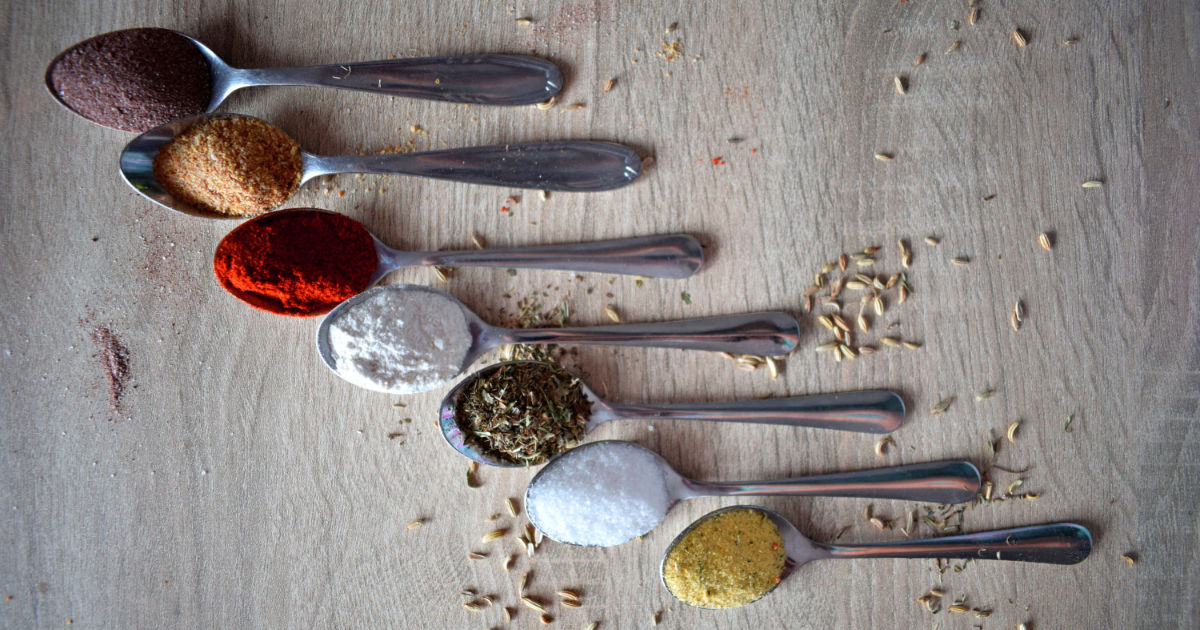The six tastes which influence us are sweet, salt, pungent, sour, astringent and bitter. It is very important to have them all in our daily cuisine. These tastes and flavor reach different parts of our tongue and they influence our nature. Excess of any taste is harmful for us. When we eat we must eat slowly and calmly. There should be no hurry and our attention should be wholly on our plate. There is a simple rule and that is to have all six tastes and as many colors on our plate as possible.
All food is composed of some combination of the five elements and the tastes are composed of different elements, earth, water, fire, air and ether. Fire, air and ether elements are light and they move upwards and produce lightness. Earth and water elements are heavy and move downwards and they produce heaviness.
- Sweet taste – Builds the tissues and calms the nerves. Its common sources are fruits, grains natural sugars, milk.
- Salt taste – Improves taste to food, lubricates tissues, and stimulates digestion. Its common sources are natural salts and vegetables.
- Sour taste – Cleanses tissues, increases absorption of minerals. Its common sources are sour fruits, yoghurt, and fermented foods.
- Pungent taste – Stimulates digestion and metabolism. Its common sources are chili, herbs, and spices.
- Astringent taste – Absorbs water, tightens tissues, and dries fats. Its common sources are legumes, raw fruits, vegetables and herbs.
- Bitter taste – Detoxifies and lightens tissues. Its source is dark leafy greens, herbs and spices.
How to include all six tastes?
It is essential for us to have all six tastes in our food. The tastes affect our mind, body and senses. Fill your plate with fifty percent vegetables, twenty five percent whole grains, twenty five percent protein and addition of herbs and spices.
The positive qualities of Sweet are grounding and nourishing. The earth and water element compose it. It is dominant in foods such as wheat, unprocessed rice, cereals, dairy, pumpkins, and licorice root to name a few.
The positive qualities of Salt are it increases confidence, spirit and courage. It is composed from the water and fire element. It is dominant in sea vegetables, sea salt, Himalayan salt, black olives and tamari.
The positive qualities of Sour are it enlivens the mind, thoughts and emotions. It is composed from earth and fire. It increases the attention span and brings discrimination and appreciation. It is found in sour cream, yoghurt, citrus fruits, vinegar and fermented foods.
The positive qualities of Pungent taste – enables one to think quickly and clearly and to gain clarity. It is composed of fire and air. It is found in spices such as chili, black pepper, mustard, and ginger.
The positive qualities of Astringent taste – it works on the digestion. It is composed from air and earth elements. It is found in pomegranates, chickpeas, green beans, okra and raw vegetables.
The positive qualities of Bitter taste – It creates self-awareness and works on mental purification. It is composed from air and ether elements. It is found in turmeric, green leafy vegetables, bitter greens, tea, coffee to name a few.
The Mahatma said, “Many such experiments taught me that the real seat of taste was not the tongue but the mind.” The take away is that be involved in the cooking of your food, and eat slowly and calmly. The thoughts are not engaged with your mind. Your awareness is in the process of eating.
Aim Him Klim
Photo by Tamara Gak on Unsplash

